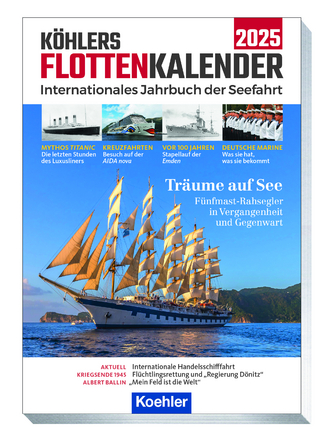
Black Tide
The Story Behind the Rena Disaster
Seiten
2012
Hodder Moa (Verlag)
978-1-86971-270-9 (ISBN)
Hodder Moa (Verlag)
978-1-86971-270-9 (ISBN)
- Titel nicht im Sortiment
- Artikel merken
Tells the real story of the Rena.
The Rena, a 236-metre-long container ship was making 17 knots when she ploughed into the Astrolabe Reef at 2:20am on Wednesday 5 October 2011. She was on her way from Napier towards Tauranga carrying 1368 containers along with 1700 tonnes of heavy fuel oil and 200 tonnes of marine diesel. The vessel's bow was impaled on a pinnacle of rock and she was hard aground forward although the sea was working her still-buoyant stern. There are no big salvage tugs on standby in New Zealand so no serious attempt to refloat the ship could be made. By Sunday 9 October, fluids and lubricants seeping from her ruptured hull had formed a 5 km slick, threatening both the Bay of Plenty's rich fishing grounds and its abundant wildlife. Gobbets of the Rena's heavy fuel oil began to foul the beach at Mount Maunganui the following day. The scene was set for a major economic and environmental catastrophe; a race against time for salvors working in hideous conditions to stem the black tide.
Hundreds of tons of thick, evil-smelling oil had been spilled, thousands of people volunteered to clean it up, millions watched the story unfold and, at first, tens and then hundreds of millions of dollars were spent by the New Zealand Government on salvage experts and equipment, as well as the pursuit of all involved with a 21-year-old ship built in Germany, registered in Liberia, insured in England, owned by a Greek company, chartered to a Swiss group and crewed by Filipinos. The stranding of the M.V. Rena has already prompted searching questions about New Zealand's ability to respond to maritime disasters. BLACK TIDE looks at the ship and her crew and tells what was happening on the bridge that night; John Julian asks Maritime New Zealand for their version of events, he speaks with the salvors and the people of the Bay of Plenty. No shipwreck is the same, but lessons can and should be learned, whether they be from the Mikhail Lermontov or the Orpheus, the Wairarapa or the Wahine. And above all, what can be done to stop this happening again?
The Rena, a 236-metre-long container ship was making 17 knots when she ploughed into the Astrolabe Reef at 2:20am on Wednesday 5 October 2011. She was on her way from Napier towards Tauranga carrying 1368 containers along with 1700 tonnes of heavy fuel oil and 200 tonnes of marine diesel. The vessel's bow was impaled on a pinnacle of rock and she was hard aground forward although the sea was working her still-buoyant stern. There are no big salvage tugs on standby in New Zealand so no serious attempt to refloat the ship could be made. By Sunday 9 October, fluids and lubricants seeping from her ruptured hull had formed a 5 km slick, threatening both the Bay of Plenty's rich fishing grounds and its abundant wildlife. Gobbets of the Rena's heavy fuel oil began to foul the beach at Mount Maunganui the following day. The scene was set for a major economic and environmental catastrophe; a race against time for salvors working in hideous conditions to stem the black tide.
Hundreds of tons of thick, evil-smelling oil had been spilled, thousands of people volunteered to clean it up, millions watched the story unfold and, at first, tens and then hundreds of millions of dollars were spent by the New Zealand Government on salvage experts and equipment, as well as the pursuit of all involved with a 21-year-old ship built in Germany, registered in Liberia, insured in England, owned by a Greek company, chartered to a Swiss group and crewed by Filipinos. The stranding of the M.V. Rena has already prompted searching questions about New Zealand's ability to respond to maritime disasters. BLACK TIDE looks at the ship and her crew and tells what was happening on the bridge that night; John Julian asks Maritime New Zealand for their version of events, he speaks with the salvors and the people of the Bay of Plenty. No shipwreck is the same, but lessons can and should be learned, whether they be from the Mikhail Lermontov or the Orpheus, the Wairarapa or the Wahine. And above all, what can be done to stop this happening again?
Previous Books: Lone Ranger Story; Super Yachts
| Erscheint lt. Verlag | 15.6.2012 |
|---|---|
| Zusatzinfo | colour illustrations |
| Verlagsort | Auckland |
| Sprache | englisch |
| Maße | 154 x 233 mm |
| Gewicht | 300 g |
| Themenwelt | Natur / Technik ► Fahrzeuge / Flugzeuge / Schiffe ► Schiffe |
| Geisteswissenschaften ► Geschichte ► Regional- / Ländergeschichte | |
| Naturwissenschaften ► Biologie ► Ökologie / Naturschutz | |
| Sozialwissenschaften ► Soziologie | |
| ISBN-10 | 1-86971-270-6 / 1869712706 |
| ISBN-13 | 978-1-86971-270-9 / 9781869712709 |
| Zustand | Neuware |
| Haben Sie eine Frage zum Produkt? |
Mehr entdecken
aus dem Bereich
aus dem Bereich
internationales Jahrbuch der Seefahrt
Buch | Softcover (2024)
Koehler in Maximilian Verlag GmbH & Co. KG
23,95 €


